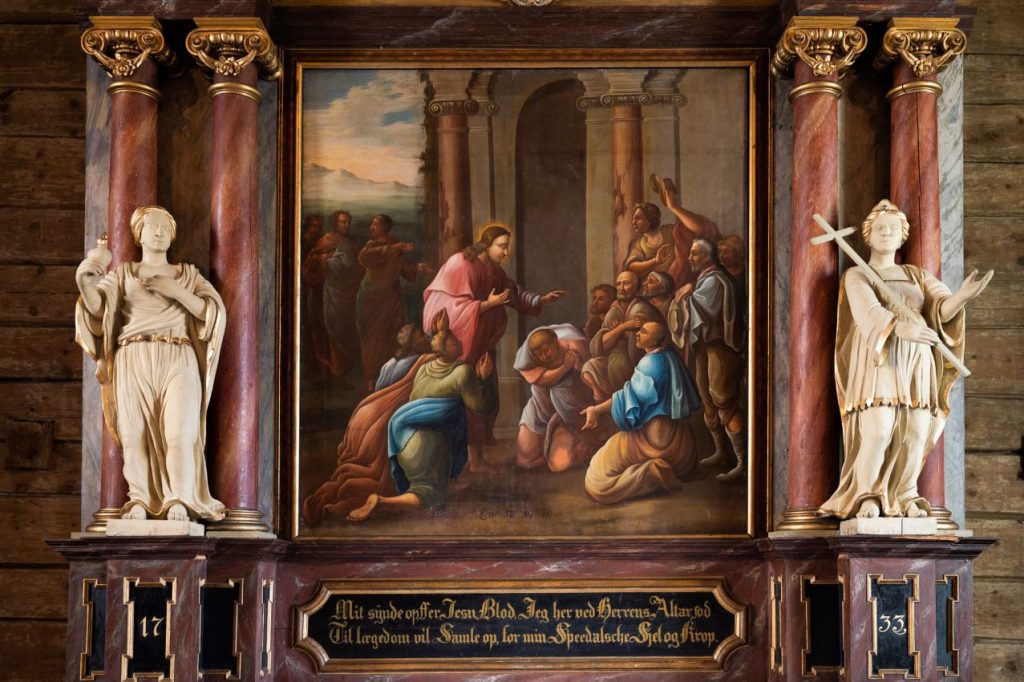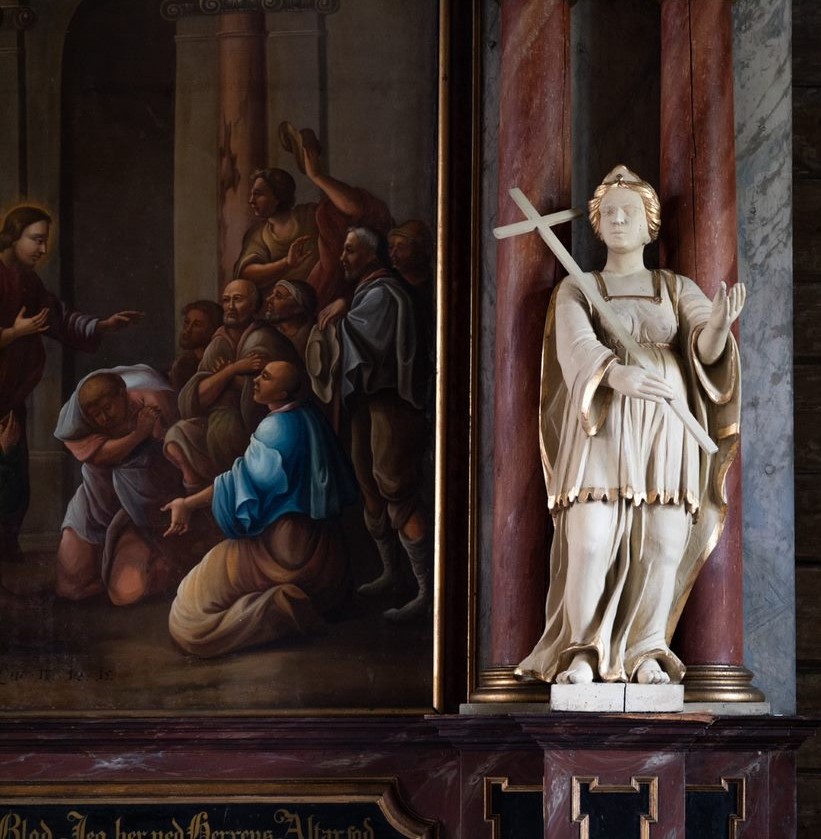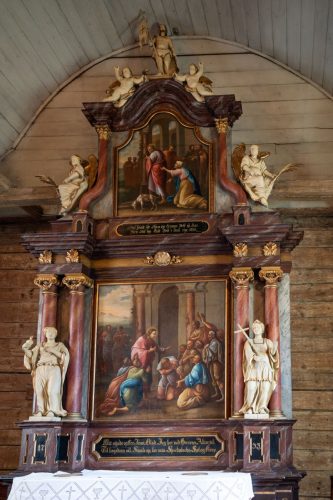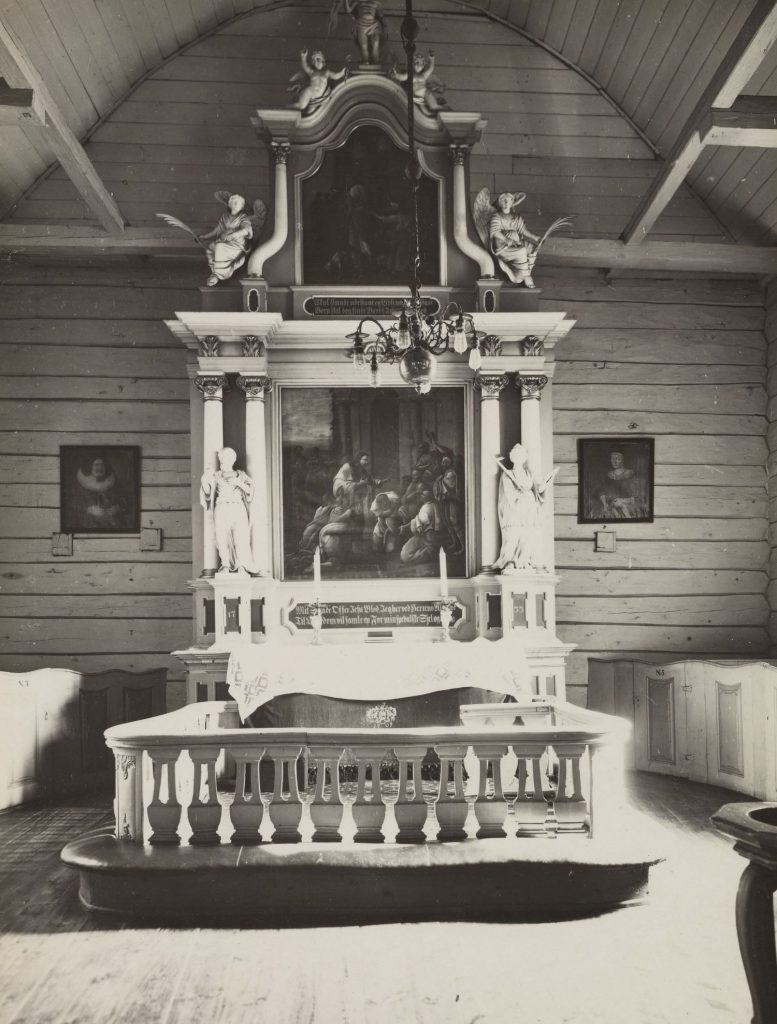The altarpiece in St. Jørgen’s Church

The first church services in the present St. Jørgen’s Church were held in 1707, but the church did not have an altarpiece until 1733. The altarpiece was commissioned the year before, after Peter Reimann donated 50 riksdaler to the work.
The altarpiece, with its paintings and sculptures, was made by the carpenter Michel Wedel, the sculptor Georg Schauer and the painter Sigismund Wagner. The contract between the three renowned craftsmen and the hospital superintendent, Claus Warwich, has been preserved. The agreement sets out the altarpiece’s size, design and ornamentation, and the quality and price of the work are agreed.
The altarpiece is Late Baroque and features seven carved figures. In front of the pillars, ‘Faith’ is personified with a cross and book on the right, and ‘Love’ with a blazing heart on the left. If you have a good eye for detail, you may notice that the personification of faith has lost the book she should be holding. The book can be seen in old photographs, but we don’t know when and how it disappeared.

The largest painting depicts the story from the Gospel of Luke in which Jesus heals ten “lepers”. The following can be read beneath it;
‘Sacrificed for my sins, the Blood of Jesus, I am here at the foot of the Lord’s altar, there to heal, my leprous soul and body.’
There was little healing for the hundreds of sick people who sat on the church pews and rested their eyes on this altarpiece. We can hope that they nevertheless took comfort in their faith and in the community in the church and at the hospital.
Old photographs show the altarpiece was once painted in shades of yellow, but, following restoration in 1936–1937, it now more closely resembles what it looked like in the 18th century.


Photo: O. Espevoll. The Directorate for Cultural Heritage.



